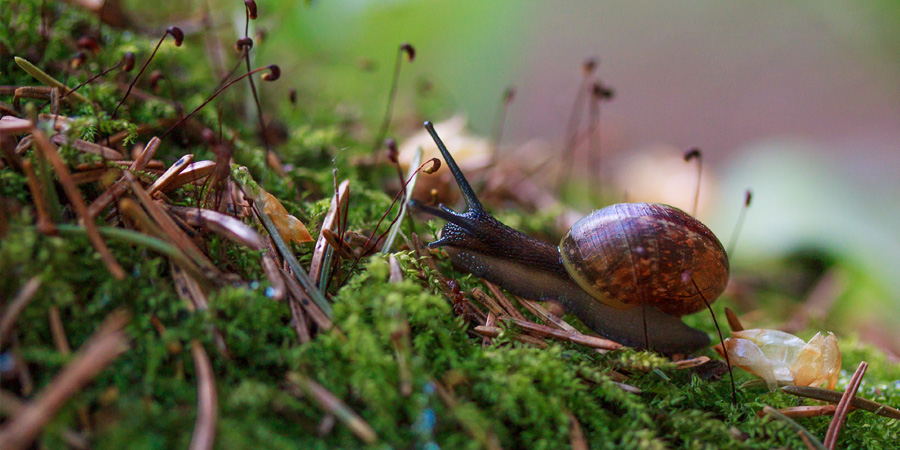Soil, plants, animals, and human microbiota, what do they have to teach us?
Eco-holonbiont, a holistic approach to understand drivers of host-associated microorganisms

Numerous studies are emerging on microbiome assembly, host-microbiome interaction and communication and the microbial role in modulating ecosystem functions. Yet, knowledge remains incomplete, mainly about the important role of biotic interactions and microbial loop (compositional linkage between soil, plant, and animal) in shaping host-microbiome (Bordenstein, 2015; Hacquard, 2015; Delgado-Baquerizo, 2018).
The present article (Singh, 2020) is an opinion published in Environmental Microbiology journal and aims to present ’ecoholobiont’ concept to fill the knowledge gap. According to the authors, addressing these gaps are critical to advance the ecological understanding and help translate host microbiome knowledge into health and industrial applications.
Holobiont, a term to define hosts and their microbiomes as a unit but with some knowledge gaps
First introduced in 1991, the term “holobiont” is defined as the unit of a host and its associated communities of microorganisms (i.e., microbiota), where microbiome provides a genomic and functional extension to their hosts. (Hacquard, 2015). Multiple pathways of host-microbiota interactions exist, both positive and negative, even though these interactions are mostly beneficial and symbiotic.
The holobiont framework has meanwhile some knowledge gaps that need to be considered. First, only a fraction of variation in host-associated microbiome is explained by the host’s genetics and abiotic factors such as climate and soils. Moreover, the impact on the interactions between microbiomes of different components of the ecosystem (host, habitats, biotic interactions) remains little understood.
Co-evolutionary theories assume that host and microbiomes evolved together and can benefit each other
Host-microbiome interactions are likely driven by evolutionary and ecological relationship, assuming that they evolve together and can benefit each other. They are generally structured by host genetics and nutrients although growing evidence indicates that host-microbiome structure is also significantly influenced by abiotic variables (soil, water, air) and biotic interactions (e.g., microbial loop across multitrophic levels) (Hacquard, 2015; Hamonts, 2018). For instance, specific biotic interactions such as predation and competition occur in the rhizosphere and endosphere of the plant and can significantly alter microbial composition, structure, and competition for nutrients (Coyte,2015; Thakur, 2019).
Flowers and leaf microbiomes are also known to be sourced from soil and/or air, and then exchanged regularly between flowers and pollinators or between leaves and herbivores (Ushio, 2015; Shikano, 2017; Kim, 2019).
Ample evidence is available to suggest that host microbiomes significantly influence plant-insect interactions. Although such biological interactions are further modulated by less known abiotic variables, multitrophic host-microbiome interactions and how the dynamic microbial loop influences the host and environment remain unclear (Ushio, 2015; Shikano, 2017).
Eco-holobiont, a concept similar to the One Health’s, to fill knowledge gaps
In order to fill the gap and to identify fundamental ecological processes that influence the assembly and functionality of soil–plant–animal microbiomes, the eco-holobiont system-based approach is suggested and explained in the present opinion.
Eco-holobiont is a holistic approach, supported by recent scientific studies, combining holobiont and other ecosystem components. For instance, it was demonstrated in recent results that, despite their distinct microbial composition, plant and gut habitats share similar microbial taxa at a high taxonomic level (e.g., Firmicutes, Bacteroidetes, Actinobacteria) and similar host functions (Mendes, 2015).
This approach is similar to the ’One Health Concept,’ which suggests that environmental and animal microbiomes can affect both human microbiomes and health (Trinh, 2018). Indeed, the eco-holobiont concept proposes that interacting biotic (plants and animals) and environmental (e.g. soil, water and air) microbiomes forms a circular microbial loop that can impact the assembly of holobionts of all living organisms within an ecosystem.
Such system is needed to improve our current knowledge on drivers of host-associated microorganisms and functions and overall ecosystem health. Without such an approach, key information on seeding, transmission and host colonization by microbial communities will likely be missed.

Based on: Brajesh K. Singh et al. Eco-holobiont: A new concept to identify drivers of host-associated microorganisms. Environmental Microbiology, 2020;22(2):564–567.
- While the ’holobiont’ concept framework has greatly expanded eco-evolutionary and functional comprehension of host-microbiome interactions, the important role of biotic interactions and microbial loop in shaping host-microbiome is not fully understood.
- An ’ecoholobiont’ approach, similar to the One Health concept, suggests that interacting biotic (plants and animals) and environmental (e.g. soil, water and air) microbiomes forms a circular microbial loop that can impact the assembly of holobionts of all living organisms within an ecosystem.
- Such system is needed to improve our current knowledge on drivers of host-associated microorganisms and functions.
